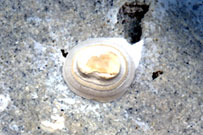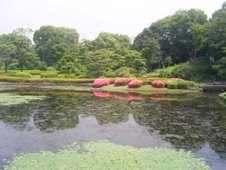

Current events, articles of interest, avoidance of the three vices (meanness, cruelty, falsehood), and musings on the pursuit of Life, Liberty, Happiness


| carley took the free ColorQuiz.com personality test! "Seeks success, stimulation, and a life full of exp..." Click here to read the rest of the results. |









My blog is worth $12,419.88.
How much is your blog worth?


Cash Advance Loans

| Your Political Profile: |
 |
1 comment:
Richard Chandler wrote to "toothdigger" via email:
"I recently talked with Dr. Joe Carter (UNC-Chapel Hill) about the "barnacles" in the clams. He has published a paper which argues that the clam, in abnormally cold times, produces these calcitic growths. The normal clam shell is made of aragonite which is fairly unstable and disintegrates over time, leaving behind the mold of the interior and the calcitic growth. (Calcite is chemically pretty stable.)
In the Lee Creek, volume I, book published by the Smithsonian, Druid Wilson presents the parasitic barnacle theory, largely based on two facts. 1) the "growths" are calcite, as are barnacle shells and 2) the tree ring-like growth structure is reminiscent of the way a barnacle expands its shell. I'm not sure if Wilson ever saw a specimen like yours. If he had, I doubt he would have presented this theory because it doesn't account for the way the calcitic growth is part of the shell wall.
I think (as far as the CD ROM is concerned) photographs of the growths should be presented with the barnacles and with the clams with a precis of each theory. I would like to take a closer photo of your specimen for the project. Do you know if you will come to the Aurora Fossil Festival next May?
The growth on the shark tooth might be bryozoa. Look at it under 10x - 20x magnification and see if there are regular small holes everywhere. Incidentally, the scute in the picture with the tooth looks like the nuccal scute from a turtle. The is the portion of the shell immediately behind the turtle's head.
Post a Comment